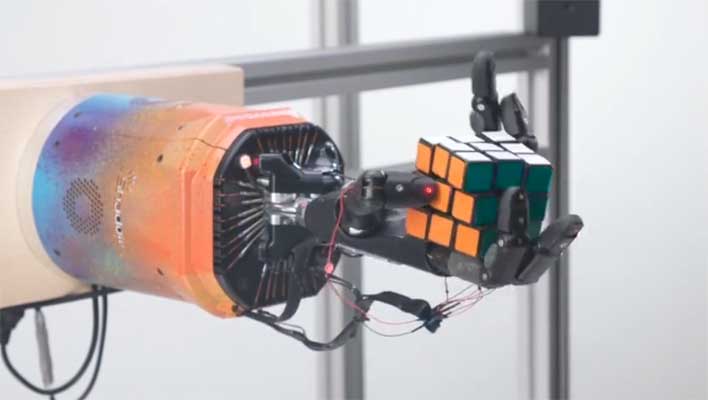OpenAI Robot Self-Learns To Solve Rubik's Cube With One Hand

A robot hand called Dactyl has successfully solved a Rubik's cube using a training regime that the AI behind the scenes created. The deal here isn't so much that it was able to solve the Rubik's cube, but that it did the task with a new level of dexterity. The robot arm was able to solve the '80s puzzle game with a single hand.
Solving the puzzle cube with a single hand is a big deal, according to roboticist Dmitry Berenson from the University of Michigan. The manipulation required to rotate the parts of the cube is much "harder" than rotating the entire cube. Robots traditionally only manipulate objects in simple ways.
Roboticists use simulation to reduce the amount of real-world training required for a robotic system to learn a task. As the algorithm learns in a virtual world, the information can then be ported to a physical robot to be tried in the real world. The catch is that it is nearly impossible to build a virtual model that replicates all the laws of physics, material properties, and manipulation behaviors.
A similar robot was able to solve the Rubik's cube last year. In that case, the researchers had to randomize parameters by hand-picking permutations they thought would lead to a better algorithm. This time out, the robot's training system does that itself. Each time the robot reached a level of mastery, the simulator tweaks the parameters to make the conditions more difficult.
The result is an algorithm that is more robust and can move with the precision needed to manipulate a Rubik's cube in the real world. The algorithm was so successful that the robot hand was able to solve the puzzle cube while wearing a rubber glove, with a few fingers bound together, and while being prodded by a stuffed giraffe. The OpenAI team thinks its results will provide evidence that the approach will unlock more general-purpose robots that can adapt to open-ended environments, like a kitchen, in the future.

